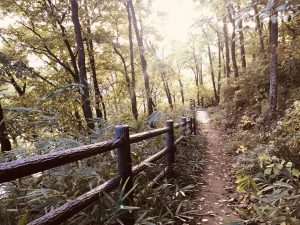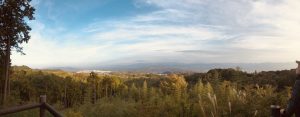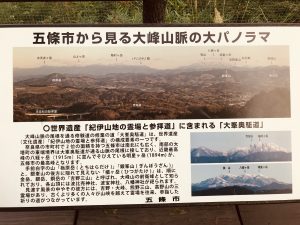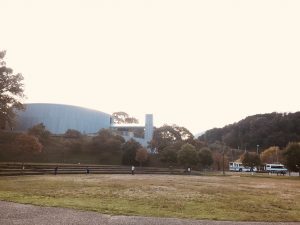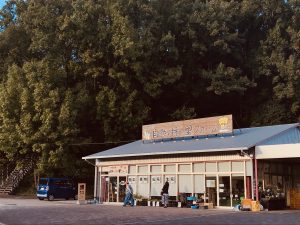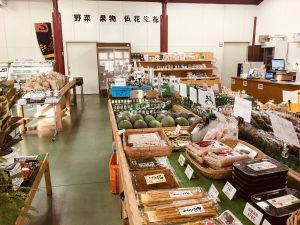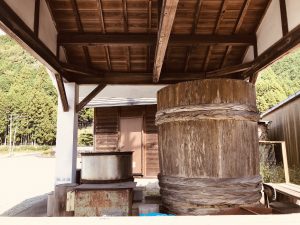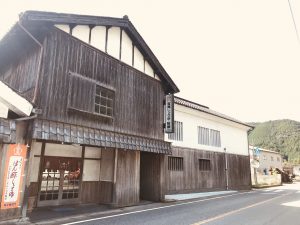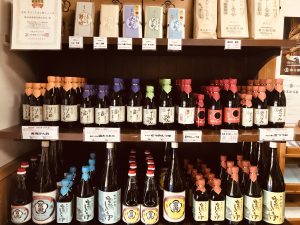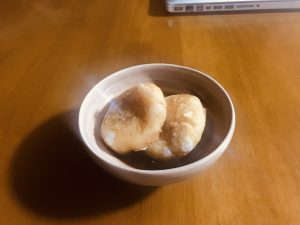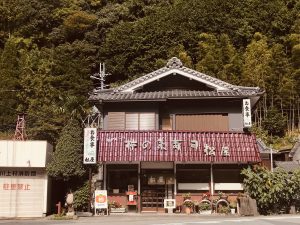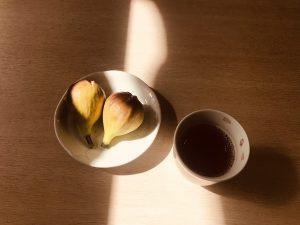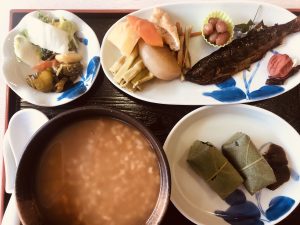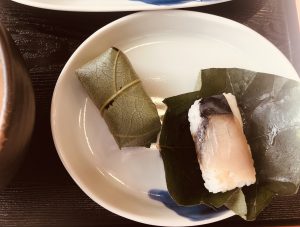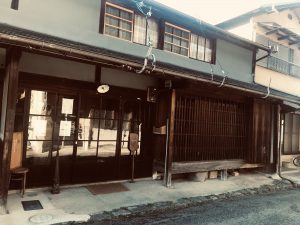 The city of Uda covers a vast amount of space in southern Nara prefecture, and includes mountains, rice fields, and many other crops. In the heart of its Oh-Uda area is a large souvenir shop, an onsen hot spring bath, and a traditional townscape. There are some unique restaurants and cafes in this townscape, and I had the pleasure of visiting one just the other day.
The city of Uda covers a vast amount of space in southern Nara prefecture, and includes mountains, rice fields, and many other crops. In the heart of its Oh-Uda area is a large souvenir shop, an onsen hot spring bath, and a traditional townscape. There are some unique restaurants and cafes in this townscape, and I had the pleasure of visiting one just the other day. 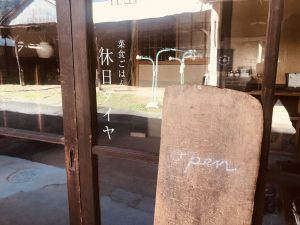 Kyujitsu-Daiya, or “holiday schedule”, is a vegan cafe and restaurant located in that townscape. In addition to not using any animal products, they make the effort to use organic vegetables, and even organic coffee. It is a warm and cozy environment located in a traditional Japanese house, with a number of quiet, unique spots for guests to sit and eat.
Kyujitsu-Daiya, or “holiday schedule”, is a vegan cafe and restaurant located in that townscape. In addition to not using any animal products, they make the effort to use organic vegetables, and even organic coffee. It is a warm and cozy environment located in a traditional Japanese house, with a number of quiet, unique spots for guests to sit and eat. 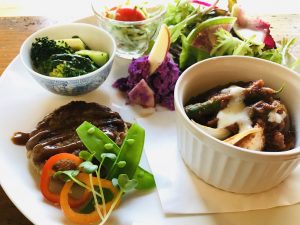 I sat in a floor seat facing the win dow of a small garden, and after I’d read a few pages in my book, the owner brought out my lunch and explained each item. It included a hamburger patty made from garbanzo beans and lotus root, a sweet potato salad made from apples, tofu okara, and soy milk mayonnaise, a bowl of brown rice, and soup made from homemade miso. It’s the kind of meal that makes you want to take your time and enjoy every bite.
I sat in a floor seat facing the win dow of a small garden, and after I’d read a few pages in my book, the owner brought out my lunch and explained each item. It included a hamburger patty made from garbanzo beans and lotus root, a sweet potato salad made from apples, tofu okara, and soy milk mayonnaise, a bowl of brown rice, and soup made from homemade miso. It’s the kind of meal that makes you want to take your time and enjoy every bite. 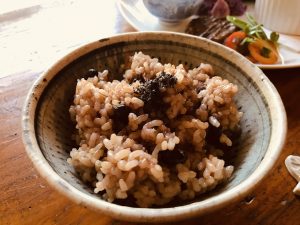
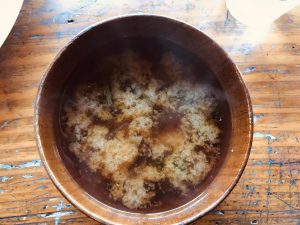 After my lunch, I had a hot cup of hot organic coffee while I sat by the window and continued reading. In a more touristy location, I might not have been able to take my time and enjoy such a quiet place. Homemade miso, local vegetables, I felt like I had a nice chance to appreciate the beauty the countryside has to offer, especially in southern Nara.
After my lunch, I had a hot cup of hot organic coffee while I sat by the window and continued reading. In a more touristy location, I might not have been able to take my time and enjoy such a quiet place. Homemade miso, local vegetables, I felt like I had a nice chance to appreciate the beauty the countryside has to offer, especially in southern Nara.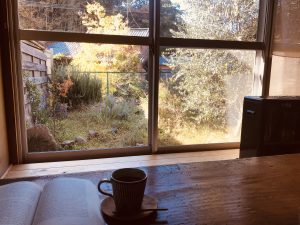
Here is Kyujitsu-Day’s instagram account. I recommend pairing a visit to Kyujitsu-Daiya with some other sightseeing in the area. Uda City has lots of beautiful landscapes and historic sites. One is Murou-ji Temple, which is famous for its huge pagoda. In the past, we have offered some programs at Murou-ji Temple that allow you to experience some rarely seen sides of this historic site, so please keep an eye out for more!

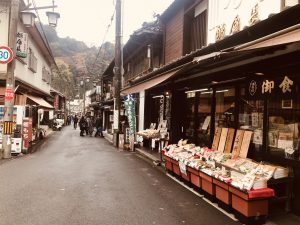
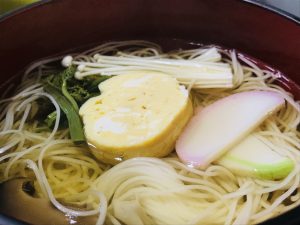
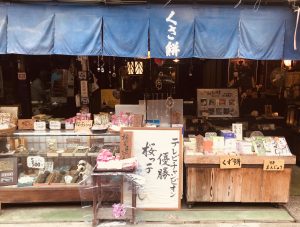
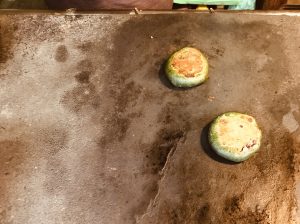
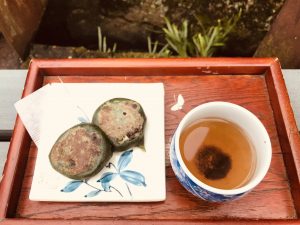
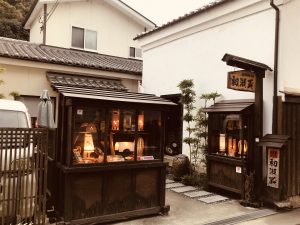
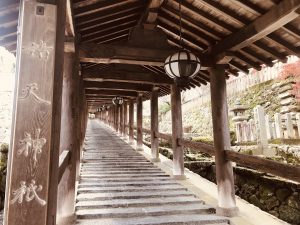
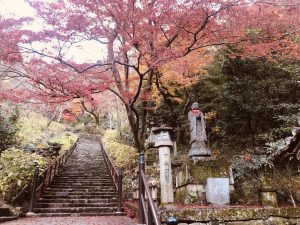
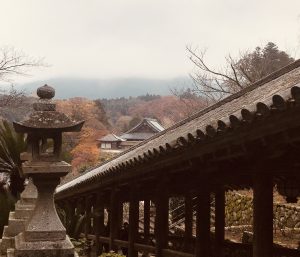

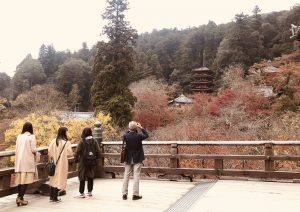
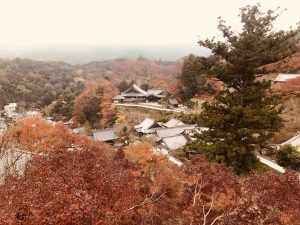 This was my first time to this wonderful temple. Though this post focuses on the seasonal beauty of the temple, it has played a very important historical role in the region, and is a destination of both tourists and pilgrimage visitors year round.
This was my first time to this wonderful temple. Though this post focuses on the seasonal beauty of the temple, it has played a very important historical role in the region, and is a destination of both tourists and pilgrimage visitors year round.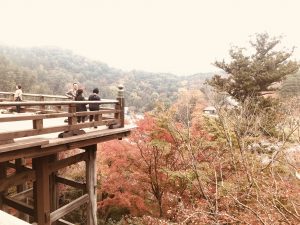
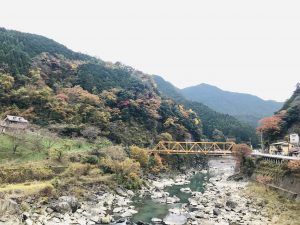
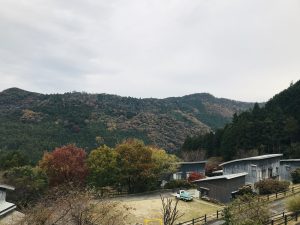
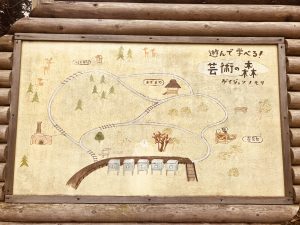
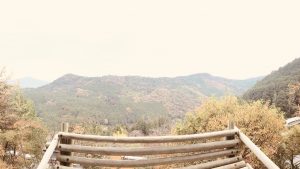
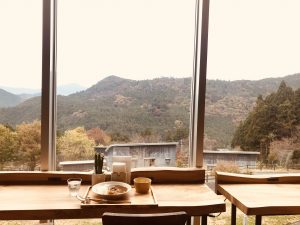
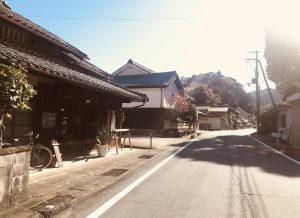 Located in the eastern part of Nara’s Yoshino Town, the area of Kuzu is full of legends, stories, and history that has been passed down for hundreds of years. This old community is centered around a road that winds down in the valley along the Yoshino River, long-known for its production of traditional Japanese washi paper. It is here in this community that a new arrival and experienced locals have come together to turn a vacant pharmacy into a delicious intersection of the old and the new.
Located in the eastern part of Nara’s Yoshino Town, the area of Kuzu is full of legends, stories, and history that has been passed down for hundreds of years. This old community is centered around a road that winds down in the valley along the Yoshino River, long-known for its production of traditional Japanese washi paper. It is here in this community that a new arrival and experienced locals have come together to turn a vacant pharmacy into a delicious intersection of the old and the new.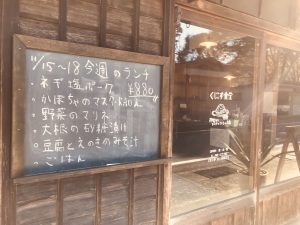
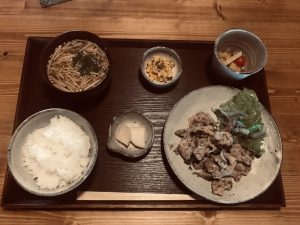
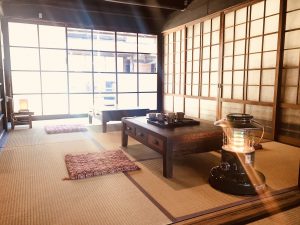 But this place wasn’t just started to serve food to people. It was born from a desire for a space where people can eat lunch, drink coffee, and come together. With a selection of coffee and desserts, countless floor pillows, and warm stove heaters, Kunisu Shokudo has quickly become a favorite of many to take a break from the day-to-day and warm up with cake, coffee, and conversation.
But this place wasn’t just started to serve food to people. It was born from a desire for a space where people can eat lunch, drink coffee, and come together. With a selection of coffee and desserts, countless floor pillows, and warm stove heaters, Kunisu Shokudo has quickly become a favorite of many to take a break from the day-to-day and warm up with cake, coffee, and conversation.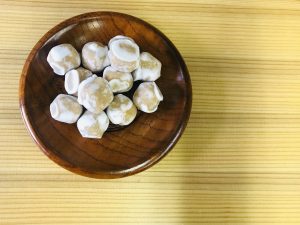
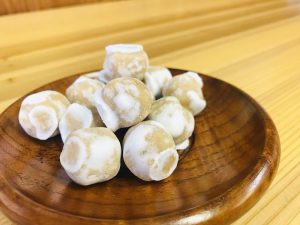
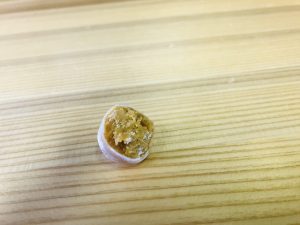
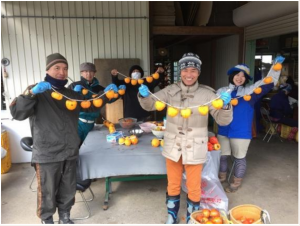 Fields of persimmon trees. Farms. Big, slow clouds, and some nice wind. That was what I expected on my first visit to Shimoichi Town last weekend, and well, that was what we had. My only prior knowledge of this peaceful, mountain town was what I had translated for the Anpo Persimmon making experience. We will have the English version up soon, but for now,
Fields of persimmon trees. Farms. Big, slow clouds, and some nice wind. That was what I expected on my first visit to Shimoichi Town last weekend, and well, that was what we had. My only prior knowledge of this peaceful, mountain town was what I had translated for the Anpo Persimmon making experience. We will have the English version up soon, but for now, 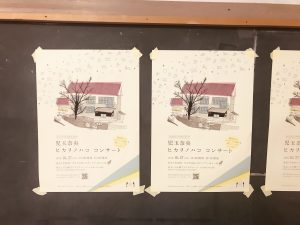
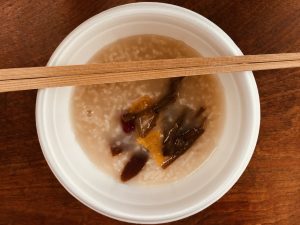
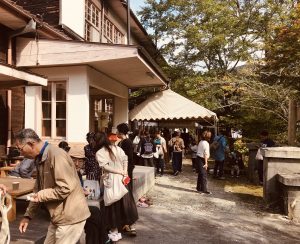
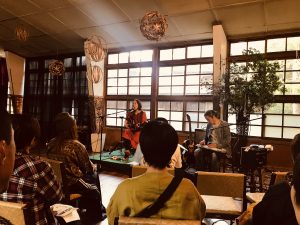 Sitting alone on the stage, she was a fresh, new presence in a school some might have considered forgotten. For me, the beauty of this event was how it found a new use (music) for a former school, and through this, introduced local food and culture to the many visitors who came that day. In addition to helping preserve the culture, it brought people together in an area with fewer and fewer residents. It was truly a pleasure to be a part of it.
Sitting alone on the stage, she was a fresh, new presence in a school some might have considered forgotten. For me, the beauty of this event was how it found a new use (music) for a former school, and through this, introduced local food and culture to the many visitors who came that day. In addition to helping preserve the culture, it brought people together in an area with fewer and fewer residents. It was truly a pleasure to be a part of it.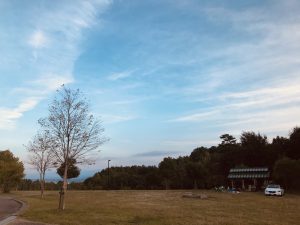 The highlight of Goman-nin No Mori Park (or “50,000 Person Forest Park”) is without a doubt its spectacular view of the valley below. Climb up a long set of steps to an acorn filled path, and continue up to the lone deck perched over the park.
The highlight of Goman-nin No Mori Park (or “50,000 Person Forest Park”) is without a doubt its spectacular view of the valley below. Climb up a long set of steps to an acorn filled path, and continue up to the lone deck perched over the park. 